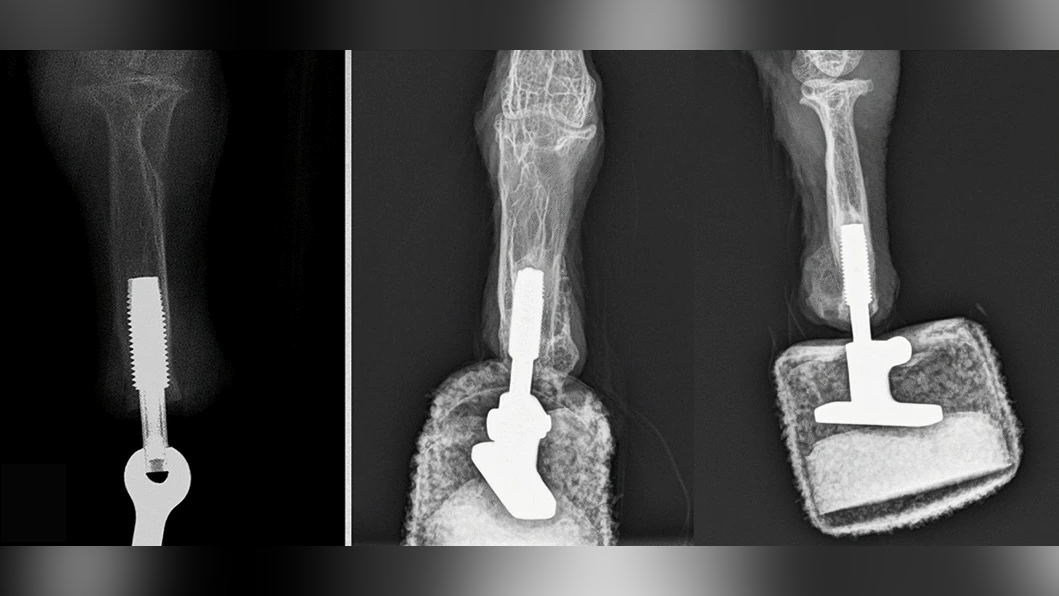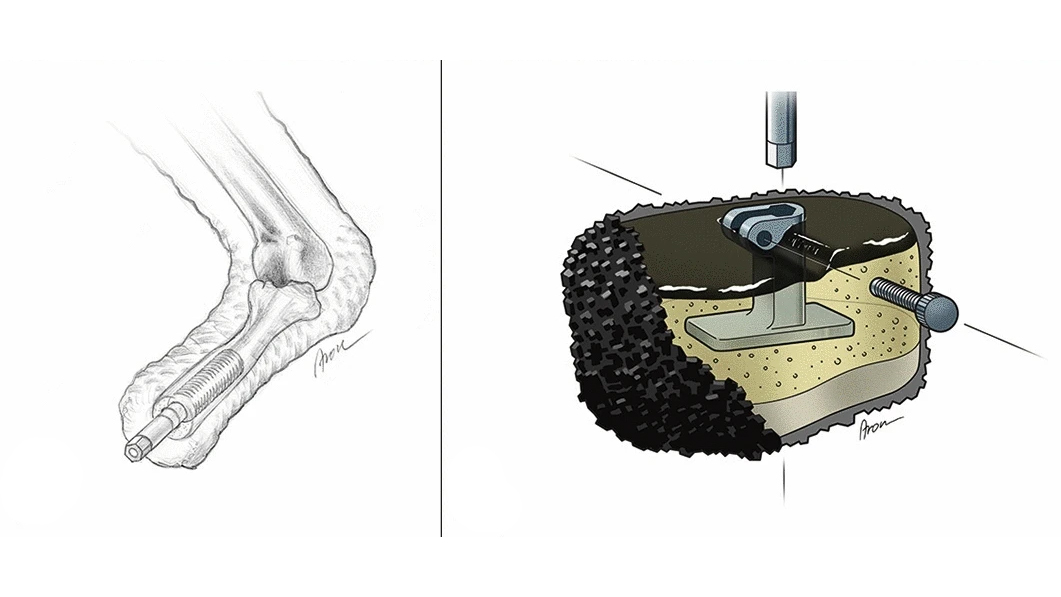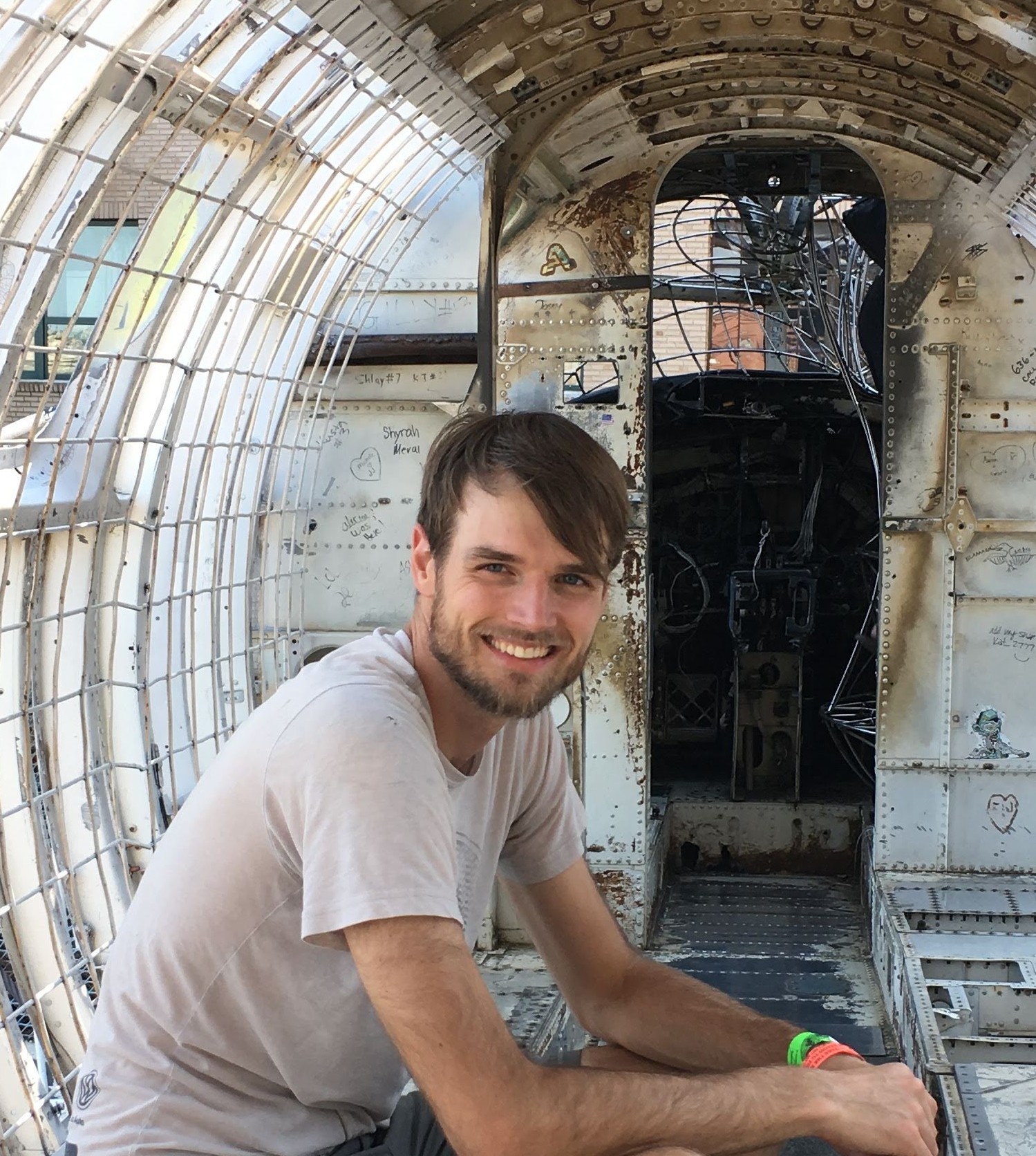World's first bionic vulture created
Lifesaving surgery gives a rare bird a leg up.

A wild vulture recently had surgery in Vienna to implant a bionic leg.
While still a nestling, Mia suffered a major injury to her right leg. Her parents had used sheep wool to hold the nest together, and some of the fibers became tangled around the young vulture's ankle. With her strangled foot starved for oxygen, her toes began to die.
Fortunately for Mia, a team of veterinarians treated her injury. However, the foot was beyond repair; an amputation left her with a right leg ending in a stump.
Related: In photos: Birds of prey
For a bearded vulture, lacking a foot is a death sentence, because the bird won't be able to feed itself. With an 8.5-foot (2.6 meters) wingspan, these rare birds, listed as "near threatened" by the International Union for Conservation of Nature, are some of the largest predatory birds native to Europe, Africa and Asia. These vultures need strong legs to lift their own body weight and seize prey. "It was clear that the rare bird could not survive long in its current condition," Dr. Oskar Aszmann, a reconstructive surgeon with MedUni Vienna who specializes in building prosthetics for humans, said in a statement.
A team of veterinarians, led by Sarah Hochgeschurz of the University of Veterinary Medicine, Vienna, contacted Aszmann for help. Aszmann is an expert in limb reconstruction, but such a procedure had never been performed on a bird.
Designing a prosthetic limb for a predatory bird presented a number of unique challenges. A detachable prosthetic would not have been durable enough to withstand the daily punishment a raptor would subject it to. Any prosthesis would have to be able to not only grip prey but also withstand the shock of such a big bird landing.
Get the world’s most fascinating discoveries delivered straight to your inbox.
Related: 10 weirdest medical cases in the animal kingdom



So the team designed Mia a custom implant that would be mounted directly into the leg bone.
Using a technique called osseointegration, the surgeons installed a metal anchor into Mia's leg bone where her ankle used to attach. Over time, the bone grows into the metal threads on the anchor, "integrating" the metal rod into Mia's skeleton.
The team then attached her prosthesis to the anchor. Instead of being shaped like an artificial bird foot, the vulture's bionic leg is a black rubber cylinder that makes Mia look like she accidentally stepped on a sushi roll. It's designed to allow Mia to grip both surfaces and prey but also to act as a shock absorber for softer landings. The cylindrical design is intended to minimize the potential of her twisting and damaging her leg when it got caught on branches, and the metal anchor integrated into the bone will provide Mia a high level of tactile feedback, Aszmann said. The team described the procedure in a study published June 11 in the journal Scientific Reports.
The surgery required anesthetizing Mia for more than two hours but it was a success.
"The bird made the first attempts to walk after just three weeks, and the prosthesis was under full load after six weeks," Aszmann said in the statement. "Today the bearded vulture can once again land and walk using both feet, making it the first 'bionic bird.'"
Bearded vultures roam the wild, feeding on the bones of other animals. Now, Mia gets to hunt again, thanks to a little titanium in hers.
Originally published on Live Science.

Cameron Duke is a contributing writer for Live Science who mainly covers life sciences. He also writes for New Scientist as well as MinuteEarth and Discovery's Curiosity Daily Podcast. He holds a master's degree in animal behavior from Western Carolina University and is an adjunct instructor at the University of Northern Colorado, teaching biology.


